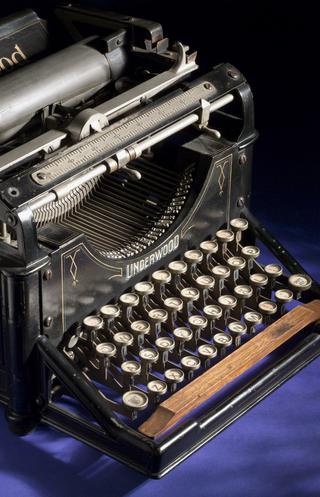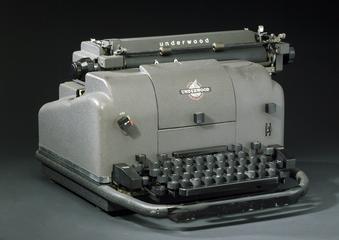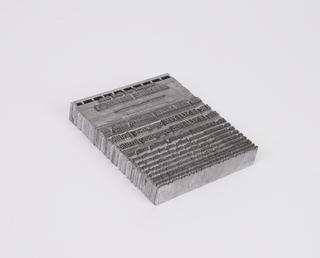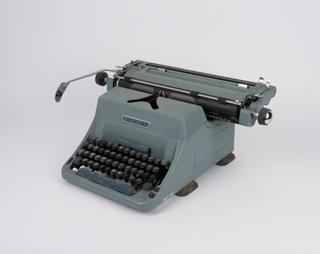
Writing machine for blind people, United Kingdom, 1862
- Made:
- 1862 in United Kingdom

Martin's writing machine for use by blind people, 1862.
The carriage of the machine is moved one space at a time when the printing lever is operated by the engagement of a pawl with a rack. On the carriage is mounted a circular disc with raised letters and perforated punches sliding vertically in recesses. The desired letter is moved into line with a pointer by the sense of touch, the operating lever is then raised and depresses a plunger which enters the appropriate hole at the opposite side of the disc to the selected letter. The plunger forces down the punch which makes a perforated letter in the paper. The paper is fed by rollers and a spring indent and ratchet and passes over a springy leather pad beneath the punch. It is reversed for reading, the shape of the letter being determined by touch on the rough edges of the perforations forming the letter shape.
Much early work in typewriters was carried out with the object of assisting the blind. John Martin introduced this writing machine for blind people in 1862, to enable blind people to produce printed material which could be read by touch.
Each letter is selected by touch and moved into line with the pointer. Once selected the plunger was pushed to make a letter-shaped hole in the paper fed by the rollers at the back. After the person finished typing, the paper was turned over and read by touch from the shapes of the holes in the paper. Machines like this one probably fell out of use with introduction of Braille in the 1820s in France. Britain and the United States did not formerly use Braille until the 1920s.
Details
- Category:
- Printing & Writing
- Object Number:
- 1862-123
- Measurements:
-
overall: 160 mm x 310 mm x 190 mm, 3.9kg
- type:
- writing machine
- credit:
- Martin, John




